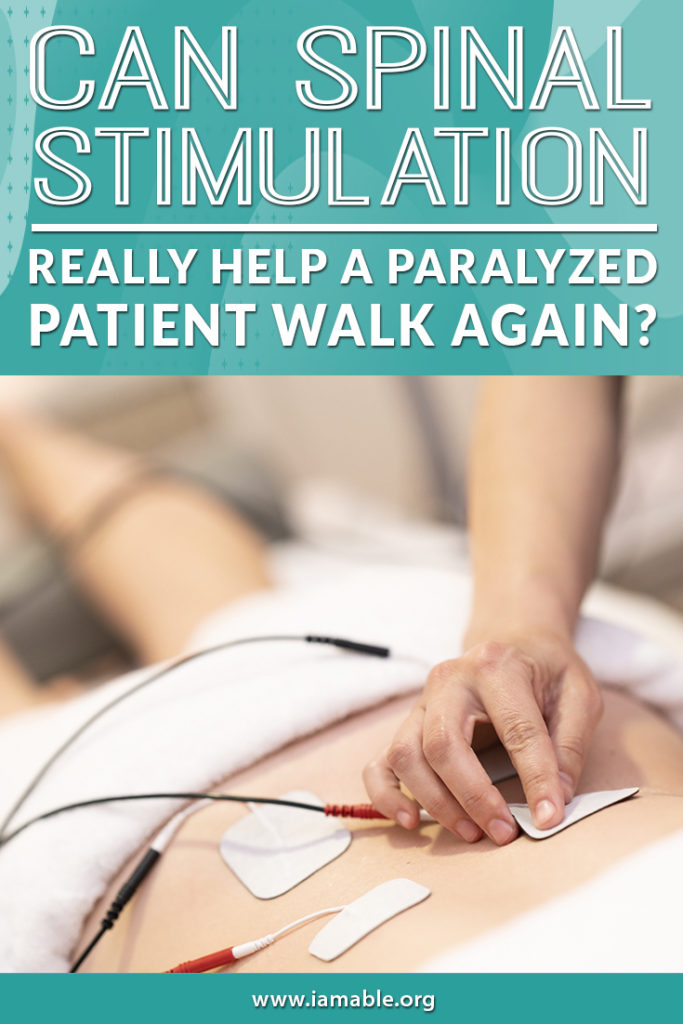Miami, FL 33186

The spinal cord injury recovery center that you choose for outpatient rehabilitation should provide you with diverse treatment options. This will optimize the odds of regaining as much of your independence as possible. Today, we will consider some of the latest advancements in spinal cord injury recovery. Spinal stimulation’s reputation is that of one of the best ways to help a paralyzed patient to walk again. But can this form of therapy really be successful? Here are some things that you should know about spinal stimulation following a spinal cord injury.
Spinal cord injuries result in severe impairment to the communication between the brain and the body. Thus, a patient may lose control of bodily functions below the point where the injury has occurred. The severity of the damage will determine if the injuries are permanent or temporary, as well as if the paralysis is complete or partial. Paresis is the word used for when the body suffers from extreme weakness rather than paralysis.
The extent of the injury will play a role in whether complete recovery is possible. However, there are advancements in modern therapies that are improving the odds for patients to recover their ability to walk. This is why we need to discuss spinal stimulation.
One type of spinal stimulation is called epidural electrical stimulation. While EES is not necessarily new, it is not a common practice. This is because, while it is very successful in lab tests on rats, it does not appear to have the same results for humans. The concept is to stimulate the spine to restore basic movement. However, the neural network of a human is far more complicated than that of a rodent. So is this therapy a waste of time?
One researcher tried to prove otherwise in a 2018 study. The neuro engineer and his team modified the EES therapy and combined it with physical therapy and exercise. As a result, they helped three patients to regain the ability to walk, albeit with the need for some degree of support. All three patients were living with paralysis for over four years, and previous rehabilitation attempts were unsuccessful.
In the study noted above, they delivered electrical pulses, rather than constant stimulation, at specific times. These targeted pulses came from a wireless device that was worn by the patient. Additionally, a harness helped the patient by supporting their body weight. It took about five months of the combined therapies to provide results for two of the three patients, and a little more time for the third patient (who had more extensive injuries).
Functional electrical stimulation follows a similar concept to EES. Electrical impulses stimulate particular muscles in order to improve muscle strength and tone. It also helps with circulation. For some patients, it has been able to provide assistance with movement of the limbs and offer better control of the bladder and bowels.
Along with FES, locomotion therapy (or gait training therapy) can also help to stimulate the nerves. As in the study noted above, Lokomat therapy involves the use of a harness to suspend the paralyzed patient in a position similar to standing. However, the Lokomat utilizes an exoskeleton strapped to the patient that can simulate a natural gait. The therapist controls how fast the treadmill moves and how much of the effort balances between the patient and the exoskeleton.
Combing functional electrical stimulation and Lokomat therapy, along with traditional physical therapy, may help restore a patient’s nerve function. At the very least, it will help with circulation and muscle tone. It allows you to get a total body workout, even if you are presently unable to activate all of your muscles.
Therefore, when choosing a spinal cord injury recovery center, you want to look for modern technologies such as these to go along with the traditional therapy methods suggested for SCI recovery. The combination of old and new techniques may be just what you need to maximize your odds of recovering the ability to walk. At the very least, it will help to optimize the amount of independence that you regain following your injury.
iAM ABLE, in Miami, Florida, is proud to offer all of these types of therapy. We also want to share another help we provide for anyone who is recovering from paralysis due to injury or illness.
Paralysis Recovery: Will You Walk Again After Your Spinal Cord Injury?
Paralysis Stroke Recovery Timeline: How Long Will My Recovery Take?
Besides physical therapy, a person who is living with paralysis needs practical assistance in the form of encouragement. After all, regardless of the technology used, recovery after a severe injury can take many months, if not years. It is essential to stay motivated if you are going to achieve the optimal results. Therefore, we have prepared an eBook entitled 7 Unbelievably Important Steps to Take to Thrive after Paralysis. The purpose of this book is to help a person who is living with paralysis to come to terms with his or her new life circumstances. Your life may never be the same as it was before your injury or illness, but you can make the most of your new situation with the right mental attitude. The faster you learn to take on new challenges, the better. So be sure to read our book as soon as possible. Then contact iAM ABLE to work with southern Florida’s premier spinal cord injury recovery center.
Grab our free e-book 7 Unbelievably Important Steps to Take to THRIVE after Paralysis by clicking the image below.
